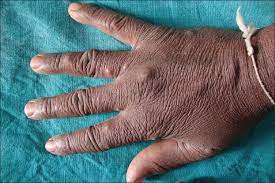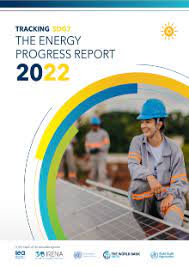Today Current Affairs:4th June 2022 for UPSC IAS exams, State PSC exams, SSC CGL, State SSC, RRB, Railways, Banking Exam & IBPS, etc
Table of Contents
Buffalopox:

The recent spread of monkeypox to non-endemic countries has trained the spotlight on reemerging viruses such as buffalopox, which was first isolated in India.
- Since the first case in 1934 globally recorded in India, the country has seen several sporadic outbreaks.
Buffalopox:
- It is a zoonotic disease endemic to India.
- It has its root in smallpox vaccines. Live virus used to inoculate buffaloes to produce the smallpox vaccine in India evolved into buffalopox over time.
- It is caused by buffalopox virus (BPXV); it is a Poxviridae for which the natural host is buffalo.
- It is classified in the Orthopoxvirus (OPV)
- Symptoms: Lesions occur localized on the udder, teats, and inguinal region, over the parotid, and the base and inner surface of the ear and eyes.
HarGharDastak Campaign 2.0:

HarGharDastak campaign 2.0” to accelerate the pace and coverage of COVID19 vaccination across States and UTs has commenced across India by Union Health Ministry.
- Incorporating the experience & learning from “HarGharDastak campaign” launched in Nov 2021, ‘HarGharDastak 2.0’ will be implemented from 1st June 2022 to 31st July 2022.
- The objective of the ‘Har GharDastak2.0’ Abhiyan is to vaccinate and cover the eligible population groups for first, second and precaution doses through door-to-door campaigns.
- Major focus will also remain on improving sub-optimal coverage of persons aged ≥ 60years with precaution dose, along with considerably slower speed of coverage in the 12-14 years cohort.
- The ‘Har Ghar Dastak’ Teekakaran Abhiyaan has been inspired by the successful strategy of Mission Indradhanush.
Eublepharis Pictus:

A gecko found in Visakhapatnam in 2017, then thought to belong to a known species, has now been identified as a member of a new species.
- The species, Eublepharis pictus, also known as the Painted Leopard Gecko, has been described in the journal Evolutionary Systematics.
- Researchers had initially identified the specimen, as an East Indian Leopard Gecko (Eublepharis hardwickii).
- This new species appears to be common in the forests of Andhra Pradesh and Odisha.
- The gecko genus Eublepharis now has 7 species.
- The new species differs from all members of the genus Eublepharis except for E hardwickii.
- Geographically the two species appear to be separated by the Brahmani River.
- Based on IUCN (International Union for the Conservation of Nature) conservation prioritization criteria, the researchers propose to list E pictus… and E hardwickii as Near Threatened (NT).
2021 Report On International Religious Freedom:

The 2021 Report on International Religious Freedom (IRF) was released by the US Department of State.
- The document is distinct from the IRF report released by the US Commission on International Religious Freedom (USCIRF).
- USCIRF is an independent, bipartisan federal government entity while the IRF is part of the US State Department. The former’s report holds a statutory obligation.
Highlights of the Report
- India has seen an increase in attacks on people (due to religious intolerance) and places of worship.
- Attacks on members of religious minority communities, including killings, assaults, and intimidation, occurred throughout the year.
- These included incidents of ‘cow vigilantism’ against non-Hindus based on allegations of cow slaughter or trade in beef.
- The India segment also highlights anti-conversion laws in the country, noting that 28 states have these laws and arrests were made under them.
- It also notes that several State governments announced plans to introduce anti-conversion laws.
- Police arrested non-Hindus for making comments in the media or on social media that were considered offensive to Hindus or Hinduism.
- There have been attacks in Jammu and Kashmir targeting and killing civilians and migrants, including Hindu migrant workers from Bihar.
- As per reports, this caused extensive fear in the Hindu and Sikh communities, leading to an exodus of migrants from the area.
- Incidents of lynching of Muslims in Tripura, Rajasthan, and Jammu and Kashmir in 2021 are also mentioned.
Development Of Trincomalee Port Into An Industrial Hub : Sri Lanka

Sri Lanka plans to develop Trincomalee port into an industrial hub that would spark global interest.
- The proposal is a long-standing plan to monetise land that belongs to the Sri Lanka Port Authority, by getting foreign and local investment for a special economic zone, an industrial park, or an energy hub.
Key Highlights:
- Trincomalee harbour is on the northeastern coast of Sri Lanka.
- It is situated on a peninsula in Trincomalee Bay—formerly called Koddiyar Bay.
- Trincomalee is the nearest port to Chennai, India.
- It offers one of Asia’s finest natural harbours which India will benefit from.
- This port will serve as a way to balance China’s influence in the Indian Ocean Region. China already has access to Hambantota Port, so Trincomalee port is important for India.
- If Indian companies engage in this development, it will enhance Indian maritime trade routes in the region.
- Earlier this year, Lanka Indian Oil Company and Ceylon Petroleum Corporation signed an agreement to develop a massive oil storage tank farm built during British rule at Trincomalee.
- This agreement will benefit from this deal.
Industry Transition Dialogue Between India And Sweden : Stockholm+50

India and Sweden hosted the Industry Transition Dialogue in Stockholm, as a part of their joint initiative i.e. Leadership for Industry Transition (LeadIT).
- The Leadership Group for Industry Transition (LeadIT) gathers countries and companies that are committed to action to achieve the Paris Agreement.
- It was launched by the governments of Sweden and India at the UN Climate Action Summit in September 2019 and is supported by the World Economic Forum.
- The LeadIT initiative lays specific focus on hard to abate sectors that are key stakeholders in the global climate action and require specific interventions.
- Japan and South Africa, the latest members of the initiative were welcomed.
- This extends the total membership of LeadIT to 37 including countries and companies together.
‘Grievance Appellate Committees’ For Hearing Appeals Regarding Social Media Posts:

A proposal for setting up ‘Grievance Appellate Committees’ for hearing appeals regarding social media posts has been put forward by the government of India.
- In 2021, multiple stand-offs over content moderation and takedown happened between the government and the social media platforms.
- Twitter accounts of news websites, actors, political workers and bloggers, posting messages in support of the farmers’ agitation were blocked following government orders.
- As Internet access continues to rapidly expand in India, new issues related to the government policies also keep emerging.
- Therefore, it becomes necessary to address the gaps to deal with such issues.
- One or more ‘Grievance Appellate Committees’ will be constituted by the Central Government as per the draft of the proposed amendments to the IT Rules, 2021.
- The appellate committees will be dealing with appeals by users against the decision of the Grievance Officer appointed by the social media intermediary.
- The committee will comprise a chairperson and other members appointed by the Central government.
- Any person aggrieved by an order of the Grievance Officer appointed by a social media network may appeal to the Grievance Appellate Committee within 30 days of receipt of communication from the Grievance Officer.
- The Grievance Appellate Committee shall deal with such appeal expeditiously and shall make an endeavour to dispose of the appeal finally within 30 calendar days from the date of receipt of the appeal.
- Every order passed by the Grievance Appellate Committee shall be complied with by the intermediary concerned.
Tracking SDG 7 – The Energy Progress Report 2022:

The Tracking SDG 7 – The Energy Progress Report 2022 was released which showed that the Russia-Ukraine war and Covid-19 crisis have considerably slowed down efforts towards attaining the Seventh Sustainable Development Goal (SDG 7) target.
- The Energy Progress Report is a product of close collaboration among the five SDG 7 custodian agencies in the form of a specially constituted Steering Group:
- International Energy Agency (IEA), International Renewable Energy Agency (IRENA), United Nations Statistics Division (UNSD), World Bank, World Health Organization (WHO).
- SDG 7 has a target of universal access to clean and affordable energy by 2030.
Findings:
Access to electricity (7.1):
- The share of the world’s population with access to electricity rose from 83% in 2010 to 91% in 2020, increasing the number of people with access by 1.3 billion globally.
- The number without access declined from 1.2 billion people in 2010 to 733 million in 2020.
- However, the pace of progress in electrification has slowed in recent years which may be explained by the increasing complexity of reaching more remote and poorer unserved populations and the unprecedented impact of the Covid-19 pandemic.
- At current rates of progress, the world will reach only 92% electrification by 2030.
Clean cooking (7.1):
- The share of the global population with access to clean cooking fuels and technologies rose to 69% in 2020, an increase of 3% points over last year 2021.
- However, population growth outpaced much of the gains in access, particularly in Sub-Saharan Africa.
- As a result, the total number of people lacking access to clean cooking has remained relatively stagnant for decades.
- The increase was primarily driven by advancements in access to large, populous countries in Asia.
Renewables (7.2):
- While the share of renewable capacity expansion rose by a record amount in 2021, the positive global and regional trajectories mask the fact that countries where new capacity additions lagged were those most in need of increased access.
- Moreover, rising commodity, energy and shipping prices, as well as restrictive trade measures, have increased the cost of producing and transporting solar photovoltaic (PV) modules, wind turbines, and biofuels, adding uncertainty for future renewable energy projects.
Energy efficiency (7.3):
- SDG 7.3 aims to double the global rate of annual improvement in primary energy intensity—the amount of energy used per unit of wealth created—to 2.6% in 2010–30 versus 1990–2010.
- From 2010 to 2019, global annual improvements in energy intensity averaged around 1.9%, well below the target.
International Financial Flows (7.A):
- International public financial flows to developing countries in support of clean energy decreased for the second year in a row, falling to USD 10.9 billion in 2019, despite the immense needs for sustainable development in most countries and growing urgency of climate change.
- Overall, the level of financing remains below what is needed to reach SDG 7, particularly in the most vulnerable and least developed countries.
New Biomass-Based Boiler Technology Launched In India Kurukshetra, Haryana:

A new biomass-based boiler technology was launched in India (Kurukshetra, Haryana) that claims to accommodate all kinds of agricultural residue as fuel and can be greener and may also help reduce the burden of stubble burning.
- Biomass-based electricity is gaining the attention of regulators and policy makers, as the country moves towards power generation that is not carbon-intensive.
- Around 2.6% of the country’s electricity demand is met by biomass.
- The new boiler had a capacity of 75 tonnes per hour and generated 15 megawatts of electricity.
- This new Denmark-based technology allows the plant to fire a wide range of fuels with less fuel preparation and handling.
- This combustion technology is advantageous because of the vibrating grate.
- The grate of a steam boiler supports the solid fuel in the furnace.
- Vibrating grate accommodates biomass of every density.
- The moisture content of the fuel, however, has to be 15-20%
- Since the vibrating grate supports firing agro residue of any size, it saves energy consumed for processing biomass for energy generation.
Advantages over Conventional Boilers:
- The existing conventional boilers are designed only for specific types of agro residue such as paddy husk, paddy straw, mustard, etc and thus restrict the biomass contribution in energy generation.
- While vibrating grate boiler technology can be a solution for firing any kind of biomass.
Biomass:
- Biomass is renewable organic material that comes from plants and animals.
- Biomass is used for facility heating, electric power generation, and combined heat and power.
Liquid Mirror Telescope (ILMT):

The four-metre International Liquid Mirror Telescope (ILMT) saw the first light recently, gazing out from its vantage on Devasthal, a hill in Uttarakhand, into the deep sky.
- The telescope, staring at the sky overhead, will make sky surveys possible and obtain images that can help observe transient phenomena such as supernovae and record the presence of space debris or meteorites — basically, watch the skies.
- The telescope has been built by a collaboration of scientists from Canada, Belgium and India.
- It is located at an altitude of 2,450 metres on the Devasthal Observatory campus of the Aryabhata Research Institute of Observational Sciences (ARIES) in Nainital district, an autonomous institute under the Department of Science and Technology, Government of India.
- A large pool of mercury placed in a vessel is spun around so fast that it curves into a parabolic shape.
- Since mercury is reflective, this shape helps in focusing the reflected light. A thin sheet of mylar protects the mercury from the wind.
- The first image made by the telescope consisted of several stars and a galaxy, NGC 4274, which is 45 million light years away.
- The telescope, having a primary mirror that is liquid, cannot be turned and pointed in any direction.
- It “stares” at the zenith and watches the sky as the earth rotates, thereby giving a view of different objects.




